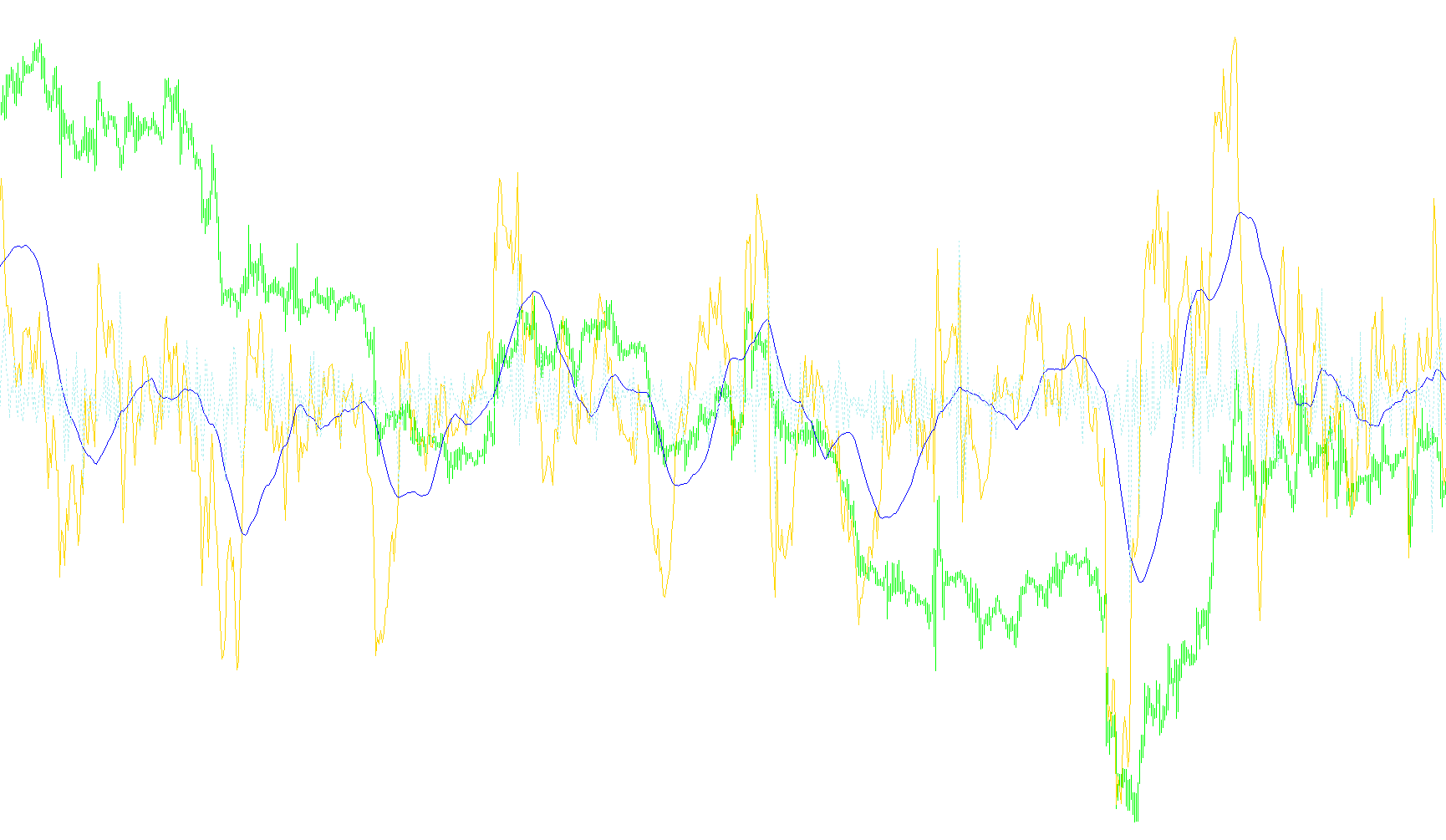
/*-----------------------------+
| |
| Shared by www.Aptrafx.com |
| |
+------------------------------*/
/*
* Filename: DayImpulse2DD.mq4
* Author: DriverDan, based on the original by Tartan at the link below
* Date: Nov 3, 2005
*
* Description: Sums the close - open for the past "per" bars and shifts it forward
* "drawShift" bars. Works very well at predicting movement.
*
* Signal2 is just the current bar's close - open shifted "drawShift"
* periods forward. This is what you see as the main signal draws. It
* isn't updated as time moves forward so that you have something to look
* back on.
*
* WARNING: Looking at past bars will be deceiving. It may look like it
* predicts perfectly on some pairs but remember that it is constantly
* updated. The most accurate live bar is the current one.
*
* The future is not set.
*
* Version: 2DD
* Released by DriverDan
* Almost all of the code has been changed or rewritten.
* Added Signal2.
*
* 1.1
* Released by DriverDan
* Fix horrible style, removed extra buffer, changed to draw from the
* beginning, added MA, and fixed gaps in signal.
*
* 1.0
* Initial release
* http://www.arkworldmarket.ru/forum/showthread.php?t=966&page=2&pp=10
*/
#property indicator_separate_window
#property indicator_buffers 3
#property indicator_color1 Gold
#property indicator_color2 White
#property indicator_color3 DodgerBlue
extern int per = 14; // Period for signal
extern int drawShift = 14; // Forward shift
extern int useMA = 1; // 1 = use MA
extern int maPeriod = 34; // Moving average period
extern int useSignal2 = 1; // Show current close - open shifted forward
// Buffers for signals
double ExtMapBuffer[];
double maBuffer[];
double closeBuffer[];
int init() {
string title = "DayImplus(" + per + ")";
// Signal and MA are normal lines
SetIndexStyle(0, DRAW_LINE);
SetIndexBuffer(0, ExtMapBuffer);
SetIndexStyle(1, DRAW_LINE);
SetIndexBuffer(1, maBuffer);
// Signal2 is a dotted line
SetIndexStyle(2, DRAW_LINE, 2, 1);
SetIndexBuffer(2, closeBuffer);
// Shift everything forward
SetIndexShift(0, drawShift);
SetIndexShift(1, drawShift);
SetIndexShift(2, drawShift);
// Titles for each line
SetIndexLabel(0, "Signal(" + per + ")");
SetIndexLabel(1, "MA(" + maPeriod + ")");
SetIndexLabel(2, "Signal2(" + per + ")");
if(useMA == 1) {
title = title + " MA(" + maPeriod + ")";
}
IndicatorShortName(title);
return(0);
}
int start() {
int counted_bars = IndicatorCounted();
int shift, i, imp, limit, lim;
// This is to make sure we go back and update bars that have already been drawn.
// This was missing in the original release. If it's not done the live signal line
// will be the same as Signal2.
if(counted_bars > per) {
limit = Bars - counted_bars + 13;
} else {
limit = Bars - 1;
}
// Loop through and calculate the signals. Everytime this runs we recalculate the
// current and all future signals. The future is not set :)
for(shift = limit; shift >= 0; shift--) {
imp = 0;
// This isn't really needed but makes sure we don't look for future,
// non-existant open and close points. It's just proper coding. You never know
// how a program will handle variables that don't exist. MT4 currently sets them
// to zero but you don't know if that will change.
if(shift - per < 0) {
lim = 0;
} else {
lim = shift - per;
}
// Calculate the signal
for(i = shift; i >= lim; i--) {
imp = imp + (Close[i] - Open[i]) / Point;
}
ExtMapBuffer[shift] = imp;
// If Signal2 is being used set it.
if(useSignal2 == 1) {
closeBuffer[i] = (Close[i] - Open[i]) / Point;
}
}
// If we're using the MA calculate it.
if(useMA == 1) {
for(shift = Bars - counted_bars - 1; shift >= 0; shift--) {
if(shift < Bars - maPeriod && shift < Bars - per) {
maBuffer[shift] = iMAOnArray(ExtMapBuffer, 0, maPeriod, 0, MODE_SMA, shift);
}
}
}
return(0);
}
Comments